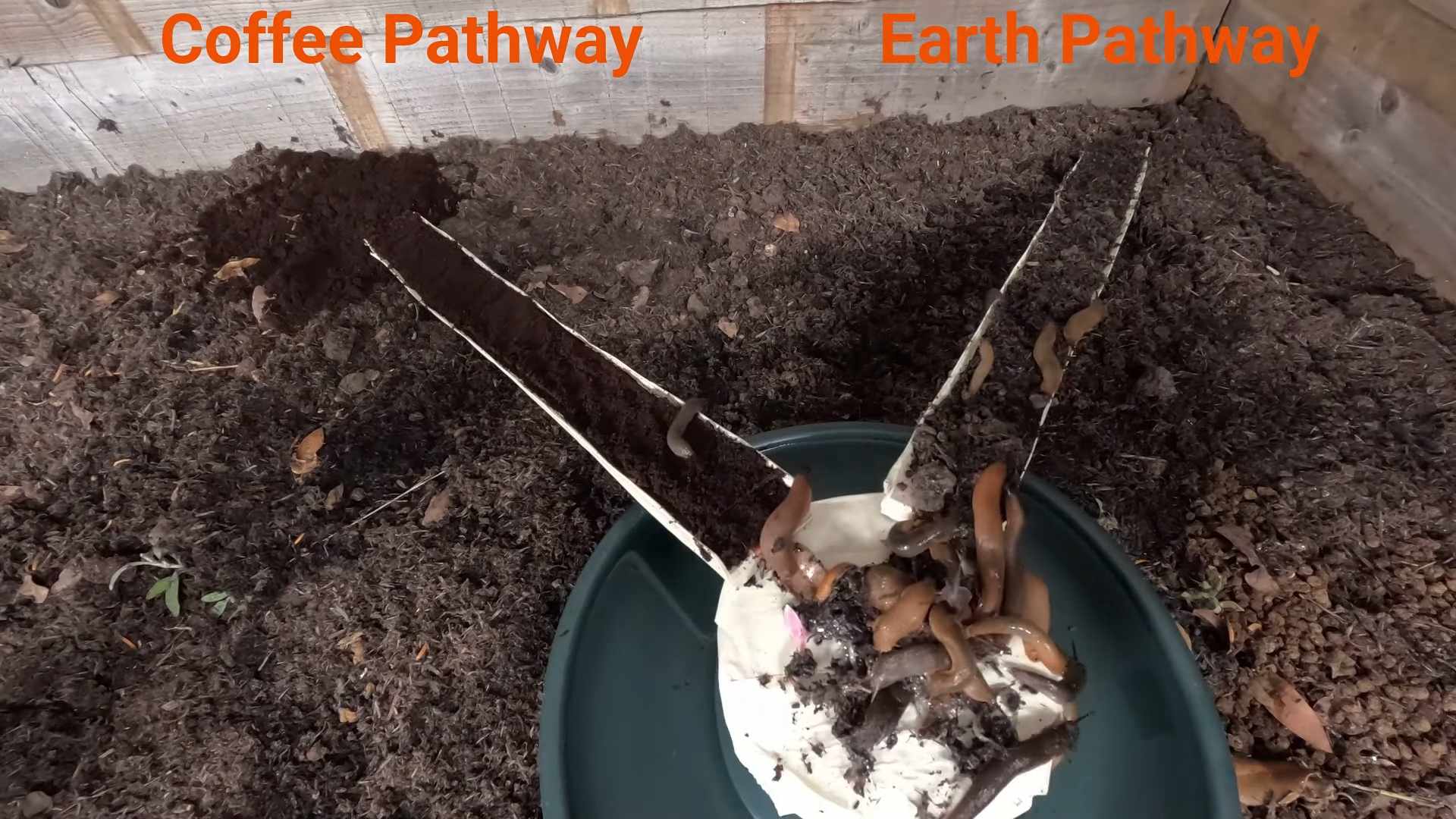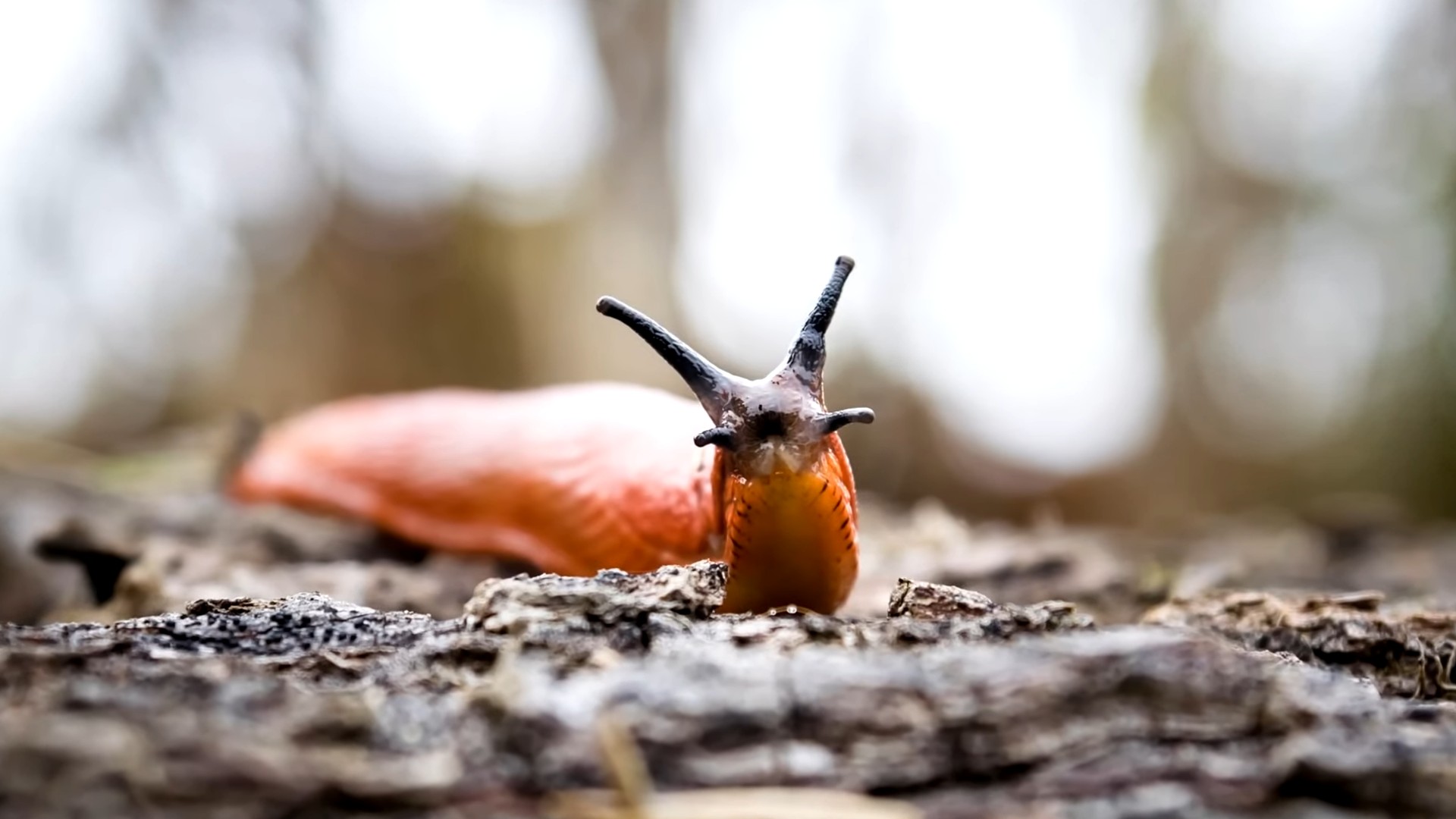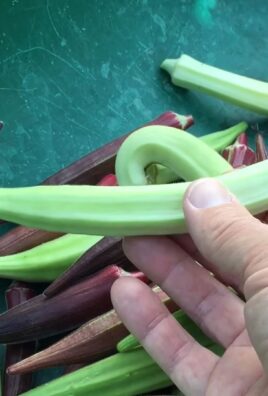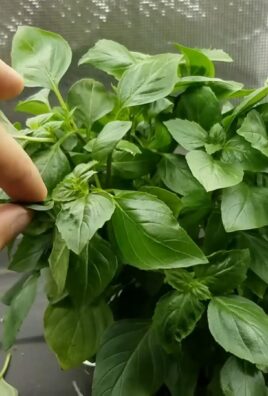Coffee grounds slug repellent: Tired of waking up to find your precious plants looking like they’ve been through a slug buffet? I know the feeling! It’s incredibly frustrating to pour your heart and soul into your garden, only to have these slimy critters munch away at your hard work. But don’t despair, fellow gardeners, because I’ve got a simple, effective, and eco-friendly solution that will have you saying “goodbye” to slug damage and “hello” to thriving plants.
Using coffee grounds as a natural pest deterrent isn’t exactly a new idea. In fact, resourceful gardeners have been using household items to protect their plants for generations. This practice harkens back to a time when reliance on chemical pesticides wasn’t the norm, and ingenuity was key to a successful harvest. Think of it as a return to our roots, embracing sustainable and natural methods to cultivate a beautiful and productive garden.
Why is this coffee grounds slug repellent trick so essential? Well, slugs can decimate entire crops overnight, leaving you with nothing but disappointment. Chemical slug pellets can be harmful to pets, wildlife, and even the soil itself. This DIY method offers a safe and readily available alternative. Plus, it’s a fantastic way to recycle your used coffee grounds, turning waste into a valuable resource for your garden. So, let’s dive in and discover how to create this simple yet powerful slug repellent and reclaim your garden from these unwelcome guests!

DIY Slug Repellent: Reclaiming Your Garden with Coffee Grounds
Hey fellow gardeners! Are slugs and snails turning your precious plants into a buffet? I know the feeling! I’ve battled these slimy critters for years, and I’m excited to share a simple, effective, and eco-friendly solution: coffee grounds! Yes, that leftover coffee from your morning brew can be a powerful weapon in your garden arsenal. Let’s dive into how to use coffee grounds to keep those pesky slugs away.
Why Coffee Grounds Work
Before we get started, let’s understand why coffee grounds are so effective. Slugs and snails are surprisingly sensitive creatures. The caffeine in coffee grounds is toxic to them in high concentrations. Plus, the gritty texture of the grounds creates a barrier they don’t like to cross. It’s like a tiny, caffeinated obstacle course for them!
Gathering Your Supplies
Okay, so what do you need? The beauty of this DIY is that it’s super simple.
* Used Coffee Grounds: This is the star of the show! Save your coffee grounds after brewing. Any type of coffee works – regular, decaf, light roast, dark roast – it’s all good.
* Container for Storage: A bucket, plastic container, or even a large zip-lock bag will do. This is for storing your coffee grounds until you’re ready to use them.
* Gloves (Optional): While coffee grounds aren’t harmful, some people prefer to wear gloves when working in the garden.
* Spreader (Optional): A small trowel or even your hands will work for spreading the grounds around your plants.
Preparing the Coffee Grounds
This step is crucial to ensure your coffee grounds are effective and don’t harm your plants.
1. Cool Down: After brewing your coffee, let the grounds cool completely. Hot grounds can damage delicate plant roots.
2. Dry Them Out (Slightly): This is important! Excessively wet coffee grounds can become moldy and attract other unwanted pests. Spread the grounds out on a tray or baking sheet and let them air dry for a day or two. You don’t want them bone dry, just slightly damp. I usually spread mine on an old cookie sheet in a sunny spot.
3. Storage: Once the grounds are slightly dry, store them in your container. Make sure the container is airtight to prevent mold growth. I use a large plastic container with a lid.
Applying the Coffee Grounds
Now for the fun part – protecting your plants!
1. Identify Vulnerable Plants: Pay attention to which plants are most often targeted by slugs and snails. Hostas, lettuce, basil, and strawberries are common favorites.
2. Create a Barrier: Sprinkle a ring of coffee grounds around the base of each plant you want to protect. The ring should be about 2-3 inches wide and about half an inch thick. Think of it as a tiny moat protecting your plants.
3. Avoid Direct Contact: Be careful not to pile the coffee grounds directly against the stem of the plant. This can sometimes cause stem rot.
4. Reapply Regularly: Coffee grounds break down over time, especially after rain. Reapply the grounds every week or two, or after heavy rainfall. I usually check my plants after it rains and reapply as needed.
Alternative Application Methods
Besides creating a barrier, here are a few other ways to use coffee grounds:
* Mix into the Soil: You can also mix coffee grounds directly into the soil around your plants. This will not only deter slugs but also add nutrients to the soil. Coffee grounds are a great source of nitrogen, which is essential for plant growth. I usually mix a handful of grounds into the soil when I’m planting new seedlings.
* Coffee Ground Tea: Brew a weak “tea” by steeping used coffee grounds in water. Let it cool completely and then use it to water your plants. This will provide a diluted dose of caffeine and nutrients. Be careful not to make the tea too strong, as it could harm your plants. I usually use about 1 cup of coffee grounds per gallon of water.
* Sprinkle on Pathways: If slugs are entering your garden from a specific area, sprinkle coffee grounds along the pathways to deter them.
Important Considerations
While coffee grounds are generally safe for plants, there are a few things to keep in mind:
* Soil Acidity: Coffee grounds are slightly acidic, so they may not be suitable for plants that prefer alkaline soil. Test your soil pH before using coffee grounds extensively. If your soil is already acidic, use coffee grounds sparingly.
* Mold Growth: As mentioned earlier, wet coffee grounds can become moldy. Make sure to dry them out slightly before using them. If you notice mold growing on the grounds, remove them and replace them with fresh ones.
* Pet Safety: While coffee grounds are generally safe for pets in small amounts, large quantities can be toxic. Keep coffee grounds out of reach of pets, especially dogs, who may be tempted to eat them.
* Worm Concerns: There’s some debate about whether coffee grounds are harmful to earthworms. While some studies suggest they can be beneficial, others indicate they might be detrimental in high concentrations. I personally haven’t noticed any negative effects on my worm population, but it’s something to be aware of. If you’re concerned, use coffee grounds sparingly in areas where earthworms are abundant.
Troubleshooting
* Slugs Still Present: If you’re still seeing slugs despite using coffee grounds, it could be that the barrier isn’t thick enough or that the grounds have broken down too quickly. Try reapplying the grounds more frequently or creating a wider barrier. Also, make sure you’re addressing other slug-attracting factors, such as removing debris and providing good drainage.
* Plant Problems: If you notice your plants are looking unhealthy after applying coffee grounds, it could be due to soil acidity or over-fertilization. Test your soil pH and adjust your application accordingly. You might also want to try using coffee ground tea instead of directly applying the grounds to the soil.
* Mold Issues: If you’re consistently having problems with mold growth, try drying the coffee grounds more thoroughly before using them. You can also add a small amount of cinnamon to the grounds, as cinnamon has antifungal properties.
Beyond Slug Repellent: Other Uses for Coffee Grounds in the Garden
The benefits of coffee grounds extend beyond just slug repellent! Here are a few other ways I use them in my garden:
* Composting: Coffee grounds are a fantastic addition to your compost pile. They’re a great source of nitrogen and help to balance out the carbon-rich materials.
* Fertilizer: As mentioned earlier, coffee grounds are a natural fertilizer. They contain nitrogen, phosphorus, and potassium, all essential nutrients for plant growth.
* Mulch: Coffee grounds can be used as a mulch to help retain moisture in the soil and suppress weeds. However, be careful not to apply too thick of a layer, as this can prevent water from reaching the roots.
* Acid-Loving Plants: Plants like blueberries, azaleas, and rhododendrons thrive in acidic soil. Coffee grounds can help to lower the pH of the soil, making it more suitable for these plants.
My Personal Experience
I’ve been using coffee grounds as a slug repellent for years, and I’ve seen a significant reduction in slug damage in my garden. I especially love using them around my hostas and lettuce, which are always the first to be attacked by slugs. It’s a simple, affordable, and eco-friendly solution that I highly recommend. Plus, it feels good to put my used coffee grounds to good use instead of throwing them away!
Final Thoughts
So there you have it! A comprehensive guide to using coffee grounds as a slug repellent. It’s a simple, effective, and sustainable way to protect your plants and keep those pesky slugs at bay. Give it a try, and let me know how it works for you! Happy gardening!

Conclusion
So, there you have it! Transforming your spent coffee grounds into a potent slug repellent is not just a clever way to recycle; it’s a game-changer for your garden. We’ve explored the science behind why this works, the simple steps to implement it, and the myriad benefits it offers, from protecting your precious plants to enriching your soil.
Why is this DIY trick a must-try? Because it’s effective, eco-friendly, and practically free! You’re already making coffee, so why not put those grounds to work one more time? Commercial slug pellets can be expensive and often contain chemicals that are harmful to pets, wildlife, and even the soil itself. Coffee grounds offer a natural, safe alternative that delivers impressive results. Imagine strolling through your garden, admiring your thriving hostas and lettuces, knowing that you’ve protected them with a simple, sustainable solution.
But the benefits don’t stop there. As the coffee grounds decompose, they release valuable nutrients into the soil, acting as a slow-release fertilizer. This means healthier, stronger plants that are better equipped to resist pests and diseases. It’s a win-win situation!
Looking for variations? Consider these ideas:
* **Coffee Ground Tea:** Brew a weak “tea” from your coffee grounds by steeping them in water. Use this liquid to spray directly onto plants that are particularly susceptible to slug damage. This method can provide an extra layer of protection.
* **Mixed Barriers:** Combine coffee grounds with other natural slug deterrents, such as crushed eggshells or diatomaceous earth, for a multi-pronged approach. This can be especially effective in areas with heavy slug infestations.
* **Composting with Coffee Grounds:** Add your coffee grounds to your compost pile. The nitrogen in the grounds will help to accelerate the decomposition process and create a nutrient-rich compost that you can use to amend your garden soil. Just be sure to balance the “green” coffee grounds with “brown” materials like dried leaves or shredded paper.
* **Coffee Ground Mulch:** Use coffee grounds as a mulch around acid-loving plants like blueberries, azaleas, and rhododendrons. The slightly acidic nature of the grounds will help to create the ideal growing conditions for these plants.
We are confident that you’ll be amazed by the effectiveness of this simple DIY trick. It’s a testament to the power of repurposing and the benefits of embracing natural gardening practices.
Now, it’s your turn! We encourage you to try this **coffee grounds slug repellent** in your own garden and see the difference it makes. Don’t be afraid to experiment with different application methods and combinations to find what works best for you.
Most importantly, share your experience with us! We’d love to hear your success stories, tips, and variations. Leave a comment below, post a photo on social media, or tag us in your gardening adventures. Together, we can create a community of gardeners who are committed to sustainable practices and beautiful, thriving gardens. So, get brewing, get gardening, and get ready to say goodbye to slugs!
Frequently Asked Questions (FAQs)
1. How exactly do coffee grounds repel slugs? What is the science behind it?
Coffee grounds contain caffeine and other compounds that are toxic to slugs. When slugs come into contact with coffee grounds, the caffeine disrupts their nervous system, causing them to become disoriented and eventually die. Additionally, the texture of coffee grounds can be irritating to slugs, making it difficult for them to move across the barrier. The acidity of coffee grounds can also deter slugs, although this is a less significant factor than the caffeine content.
2. What kind of coffee grounds work best? Do I need to use fresh grounds, or can I use used ones?
Used coffee grounds are perfectly effective and are the most sustainable option. The caffeine and other repellent compounds are still present in used grounds, even after brewing. Fresh coffee grounds can also be used, but they may be more acidic and could potentially burn delicate plants if applied directly. If you choose to use fresh grounds, it’s best to mix them with compost or soil before applying them to your garden.
3. How often should I reapply the coffee grounds?
The frequency of reapplication depends on several factors, including rainfall, the severity of the slug infestation, and the type of soil in your garden. After heavy rain, the coffee grounds may be washed away, so it’s important to reapply them. In general, you should reapply coffee grounds every 2-4 weeks, or more frequently if you notice slug activity. Regularly check your plants for signs of slug damage and reapply the coffee grounds as needed.
4. Are coffee grounds safe for all plants? Are there any plants that I should avoid using them on?
While coffee grounds are generally safe for most plants, they are slightly acidic, so they are best suited for acid-loving plants like blueberries, azaleas, rhododendrons, and hydrangeas. Avoid using coffee grounds around plants that prefer alkaline soil, such as lavender, rosemary, and thyme. If you’re unsure whether a particular plant will tolerate coffee grounds, it’s best to test a small area first. You can also mix the coffee grounds with compost or soil to reduce their acidity.
5. Can I use coffee grounds in my vegetable garden?
Yes, coffee grounds can be used in vegetable gardens to repel slugs and enrich the soil. They are particularly beneficial for plants like tomatoes, peppers, and cucumbers. However, as with all plants, it’s important to monitor the soil pH and adjust accordingly. If the soil becomes too acidic, you can add lime to raise the pH.
6. Will coffee grounds harm earthworms?
While high concentrations of caffeine can be harmful to earthworms, the amount of caffeine present in used coffee grounds is generally not enough to cause significant harm. In fact, earthworms can benefit from the addition of coffee grounds to the soil, as they provide a source of organic matter and nutrients. However, it’s important to avoid applying large amounts of coffee grounds directly to the soil, as this could create an unfavorable environment for earthworms.
7. How much coffee grounds do I need to use to effectively repel slugs?
The amount of coffee grounds needed depends on the size of your garden and the severity of the slug infestation. A thin layer of coffee grounds around the base of each plant is usually sufficient. You can also create a wider barrier around vulnerable plants to provide extra protection. As a general guideline, aim for a layer that is about 1/4 to 1/2 inch thick.
8. What are some other natural ways to repel slugs besides using coffee grounds?
In addition to coffee grounds, there are several other natural ways to repel slugs, including:
* **Crushed eggshells:** The sharp edges of crushed eggshells can deter slugs from crawling across them.
* **Diatomaceous earth:** This natural powder is made from fossilized algae and is abrasive to slugs’ bodies.
* **Copper tape:** Slugs are repelled by copper, so you can wrap copper tape around plant pots or raised beds.
* **Beer traps:** Bury a container filled with beer in the ground. Slugs are attracted to the beer and will drown in it.
* **Handpicking:** At night, when slugs are most active, you can handpick them from your plants and dispose of them.
9. Can I use coffee grounds to deter other pests besides slugs?
Coffee grounds can also deter other pests, such as ants, snails, and certain types of beetles. The caffeine and other compounds in coffee grounds can be toxic to these pests, and the texture of the grounds can make it difficult for them to move around.
10. Where can I get more coffee grounds if I don’t drink enough coffee myself?
If you don’t drink enough coffee to generate enough grounds for your garden, you can ask local coffee shops if they will give you their used coffee grounds. Many coffee shops are happy to give away their used grounds, as it saves them the cost of disposal. You can also ask friends, family, or neighbors who drink coffee to save their grounds for you.





Leave a Comment